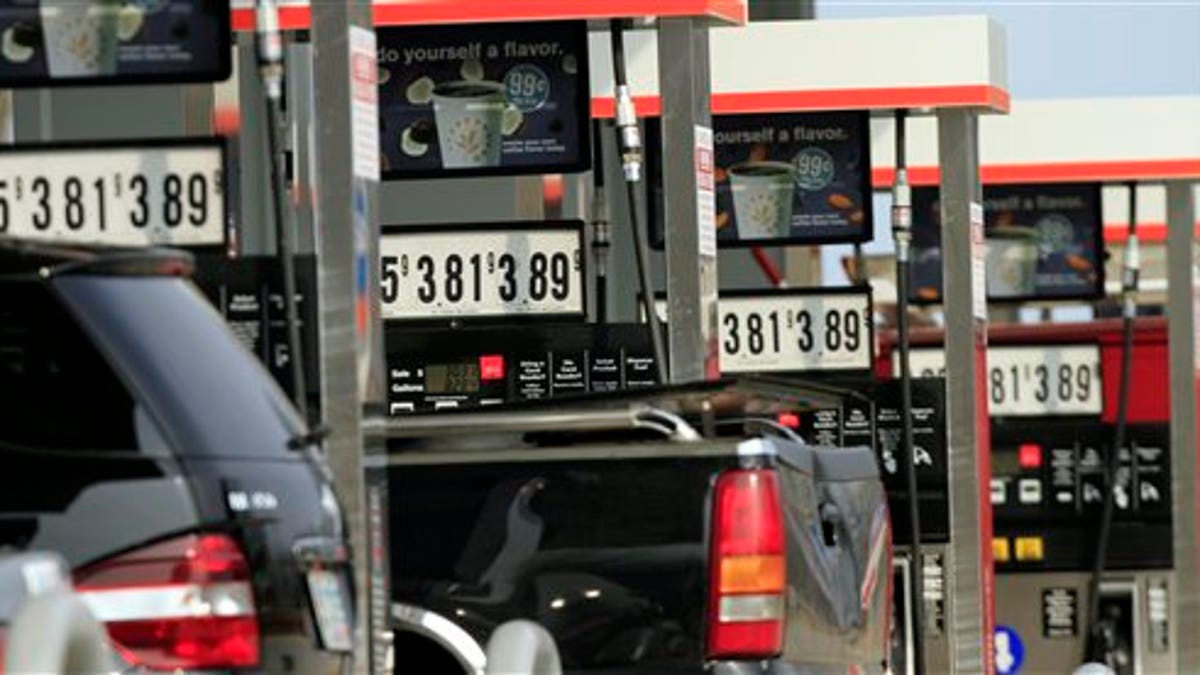
April 11: Gas prices are on the rise as seen at this gas station in Laconia, N.H. (AP)
WASHINGTON – A spike in the cost of gasoline pushed wholesale prices higher in March, a trend that could limit consumer spending in the coming months.
Still, most economists don't expect that will lead to widespread inflation because businesses are wary of raising prices when most people aren't getting significant pay increases.
Gas at the wholesale level jumped 5.7 percent in March. Much of the price increase is being passed along to consumers, who on Thursday paid an average of $3.81 for a gallon.
Diane Swonk, chief economist at Mesirow Financial, said the economy is seeing "a blip" in inflation because of the rise in gas prices, as well as higher foods costs. But "it is just very hard for the broader economy to hold price increases for very long when that blip is causing consumers to curtail spending elsewhere," she said.
Overall, the Producer Price Index, which measures price changes before they reach the consumer, rose 0.7 percent last month and is up 5.8 percent over the past year, the Labor Department said Thursday. Food prices eased slightly in March after having risen in the previous month by the most in 36 years.
Excluding volatile food and energy, inflation at the wholesale level was relatively tame.
There were some signs that could change. New cars rose by the most in nearly two years and the cost of some types of furniture jumped. Still, core prices have risen by less than 2.0 percent over the past year, well within the Federal Reserve's preferred range for inflation.
Consumer prices are also increasing but at a slower rate than wholesale costs. The government gives its March reading on those prices Friday. Economists expect the gains will match those made in February.
A majority of Fed policymakers, including chairman Ben Bernanke, say the surge in oil and gas prices will lead to only a temporary increase in inflation. For inflation to take off, workers typically have to receive higher wages, which hasn't happened. Average hourly pay has only risen 1.7 percent in the past year, a fact that has kept inflation from spreading.
Employers have little incentive to raise pay when the unemployment rate is high. Businesses are also unlikely to raise prices by much if they sense people can't afford to pay the added costs.
A separate Labor report showed that the number of people seeking unemployment benefits increased to 412,000 last week. Applications near 375,000 are consistent with a sustained increase in hiring. Applications peaked during the recession at 659,000.
The four-week average of applications, a less volatile measure, rose to 395,750. However, applications have dropped about 6 percent over the past two months. At the same time, businesses have stepped up hiring.
Companies added more than 200,000 jobs in March for the second straight month, the first time that has happened since 2006. The unemployment rate fell to a two-year low of 8.8 percent and has dropped a full percentage point since November
"Unfortunately, wage growth has not been commensurate with the pickup in job creation," said Dan Greenhaus, chief economic strategist at Miller Tabak. "The economy can add a zillion jobs but if wage growth is not coincident ... purchasing power is likely to be constrained."
___
AP Economics Writer Jeannine Aversa contributed to this report.

